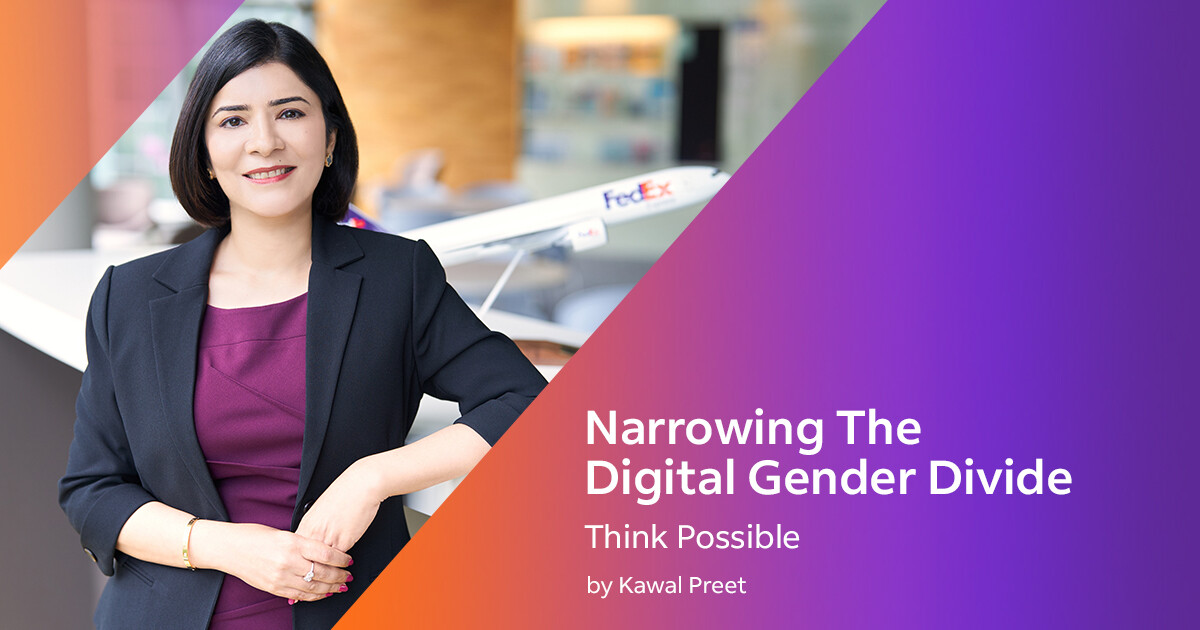
Narrowing The Digital Gender Divide
It’s widely reported that a significant gender gap continues to exist all around the globe. Take the modern workplace. If we put certain industries under the microscope – and manufacturing, aviation and logistics come to mind – women are majorly under-represented across the board. Part of this is a persistent lack of real gender equity in STEM (science, technology, engineering and maths). But the clock is ticking. The gap needs to be closed, and we are running out of time. Because recently, this problem has become more acute.
So much so that this year’s theme for International Women’s Day was “DigitALL: Innovation and technology for gender equality”. Greater scrutiny is being placed on digital equity and the role technology has to play in gender parity. The UN is driving the conversation forward; the UN Women’s Gender Snapshot 2022 report has revealed that excluding women from tech comes at a heavy economic cost. It’s emerged that under-representation of women in the digital world has knocked $1 trillion off the gross domestic product of low- and middle-income countries in the last decade. Left unchecked, this loss that will spiral to $1.5 trillion by 2025.
And yet, much has been made of technology helping to level the playing field, opening up a brave new world of access for all. A huge digital shift has taken place, accelerated all the more by the global pandemic. And it is supposed to spell opportunity.
But on the flip side, it’s possible that technology can actually widen the gender gap if we don’t take action to redress the balance. The World Economic Forum reported that COVID-19 set progress back an entire generation for women globally – and this will be more acute in less-developed countries. An entire generation: that’s the difference between a gender gap and a gender gulf.
What can we do, as businesses, educators, mentors, and consumers to tackle the gender divide? How can tech work with us in providing platforms or breaking down barriers? I see three important ways we can step up:
1) Bridging the digital divide
As you read this on your laptop or mobile, you might find it difficult to imagine life without tech at your fingertips, or a smartphone less than a few inches away. But for many in less socio-economically privileged backgrounds, or remote, rural communities, being literally tech-poor is a huge barrier to further education, upskilling and applying for jobs.
This goes hand-in-hand with education and training programmes, which need to be made freely available to more and more women through educational outreach, grants and scholarships.
2) Breaking bias in STEM
For many young girls and women, excelling at or pursuing a career in STEM means going against the grain, and combating conscious and unconscious bias every step of the way. STEM education in the Asia Pacific, Middle East and Africa region – culturally, religiously and economically diverse with wide disparities – presents unique challenges.
A 2020 study of girls in the Philippines revealed that girls started to lose interest in STEM subjects as early as age 10, as they began to perceive that STEM careers were most likely to be dominated by men. UN data shows that just 30% of female students globally and in Africa select STEM-related fields in higher education.
We need to re-calibrate how we talent-source and educate in this field, tracing the problem back to its root cause. One thing that makes a huge difference is the visibility of female mentors and role models, from female physics teachers in classrooms to NASA scientists on the news.
3) Flexibility and empathy in the workplace
In Asia Pacific, 44% of women in STEM occupations weren’t offered any flexible work arrangements during COVID-19. This has an immediate knock-on effect, causing a forced ‘drop-out’ culture where women fall behind their male counterparts and lose out on advancement and future growth.
During COVID-19, this issue was so widespread it was described as a ‘she-cession’. The fall-out is still being felt. One of the most effective ways to offer genuine equity for women – more seats at the table, more doors held and left open – is a truly flexible workplace. Women are often most responsible for childcare, ill relatives or elderly parents. Committing to real flexibility, from remote and hybrid working to flexible hours, holiday arrangements and sabbatical options, gives women the power they need to thrive and grow.
Certainly, the digital revolution is helping us to identify and address economic, environmental and humanitarian issues and shape society for the better. But our digital world has also seen patterns of gender inequality intensify, with women being left behind. Building a truly inclusive world isn’t just kind or fair. It’s critical, urgent and overdue.
Global business leader, passionate, visionary, skilled freight forwarding ,Intl logistics/ SCM industry expert. Global customer advocate, sales & business development, coaching and mentoring, transformational leadership
1 年Great thought!!! Inspiring to the hilt!!
Enterprise Software Management | For Benevolent Causes | Values to Communication Industry | To the Cloud and Beyond
1 年There has been great progress in this area though you have enumerated and described each point very well to consider till an equilibrium is achieved. The key is to ingrain gender agnostic thinking as a long term permanent thought process.